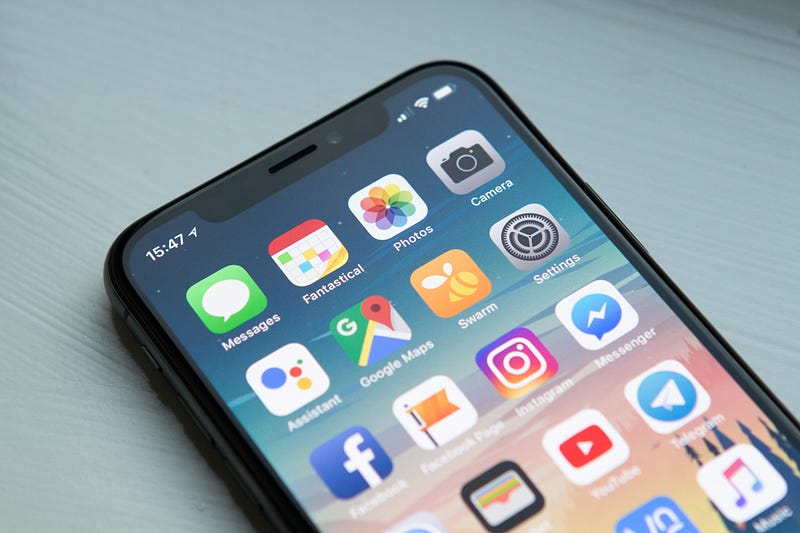TECHNOLOGY
More Ways to Get More Out of Your iPhone & iPad

Apple did a rare thing this week. It gave us a sneak peek of iOS 16 before it has even been announced. However, it did so for the best possible reason. These new features were unveiled to help honor and celebrate Global Accessibility Awareness Day.
Whether you realize it or not, the accessibility options on a modern mobile device have become more critical than ever before. They are designed for a specific subset of users, but, beyond that, many more people are taking advantage of these innovative features.
Why? It’s simple. They improve the user experience.
Do you use Back Tap on your iPhone? What about Reachability or Shake to Undo? These are all accessibility features, and they are just the tip of the accessibility iceberg. So, here’s what’s coming in iOS 16.
Door Detection
This new option combines the power of LiDAR, the camera, and on-device machine learning to help those who are blind or have low vision locate a door. It helps those users understand how far away they are from it, and be able to detect if it is open, closed, or has a knob or a handle. Door Detection can also read signs or text on a door as well as room numbers.
This new feature will be part of the Magnifier app and will complement existing features like People Detection and Image Descriptions.

More Apple Watch Accessibility
Apple introduced a slew of Apple Watch accessibility features in May 2021, and it is showing no signs of slowing down with these latest additions.
Apple Watch Mirroring lets users can control their Apple Watch from their iPhone and includes the option to use the iPhone’s accessibility features like Voice Control and Switch Control as alternatives to tapping the display of the Apple Watch.
In addition, there are new gestures that can be used to navigate an Apple Watch. Apple is calling these Quick Actions. For instance, a double-pinch gesture can answer or end a phone call, dismiss a notification, take a photo, or play and pause media. These new actions will add to the existing accommodations you can have with Assistive Touch for Apple Watch.

Live Captions
This is a big one. In iOS 16, Apple is introducing Live Captions on iPhone, iPad, and Mac. Any audio content can now have live captions on the screen as the audio is played. Apple says it will work on a phone call, a video conference app, on social media apps, with streaming media content, or even having a conversation with someone next to you.
This is a huge upgrade for the deaf and hard-of-hearing communities because it makes their iPhone or iPad a lot more useful. I don’t count myself among that group, but as someone who prefers to watch TV with closed captions enabled, I could see this being very useful for me too.
Of note, Live Captions are generated on your device, so everything you hear stays private and secure. Nothing is sent to the cloud for processing.

New Languages for VoiceOver
Apple is adding support for more than 20 additional languages to their VoiceOver library, including Bengali, Bulgarian, Catalan, Ukrainian, and Vietnamese. There are also dozens of new voices optimized for assistive features like Speak Selection and Speak Screen.
Buddy Controller
This one is similar to the Xbox Copilot feature. It allows you to combine two game controllers to operate as a single input. It means users with a physical disability can have a friend or family member help them access all the controls that they need to play a game successfully.
Siri Pause Time
People with speech disabilities can find Siri frustrating because it only listens for commands for a short amount of time after it is activated. Siri Pause Time changes that. It allows the user to choose how long Siri should wait for a response after you summon it.
Sound Recognition
You can already have your iPhone listen for sounds it thinks it can recognize like dogs barking or a fire alarm, but Apple is expanding this feature to include sounds that are specific to your environment. For instance, in iOS 16 you will be able to train your iPhone to listen to and recognize the sound of your doorbell or the tone your washing machine makes when it is done.

Voice Control Spelling Mode
The iOS dictation feature is already very good, but Voice Control Spelling Mode will let you dictate a word by spelling it out letter by letter. On launch, this feature will only be available in US English, but I wouldn’t be surprised to see this expanded over time.
Apple Books Updates
Last but not least, Apple is promising new themes for Apple Books. It’s also adding some new customization options like the ability to bold text and adjust line, character, and word spacing.
Most e-reader apps offer similar features so it is great to see Apple catching up here to help offer a more accessible reading experience in Apple Books.
Apple Loves Accessibility
Historically, Apple has always had a reputation for pushing the envelope with accessibility. It knows that new technological advances are great for cameras, apps, and multi-tasking, but it rarely forgets to put that same technology to work to make its devices more accessible.
These new features are a great example of that. Whether they were designed for your needs or not, they are an excellent addition to the feature set of an iPhone or iPad. They enable people to do things that they weren’t able to do before. If that isn’t the true goal of technology, I don’t know what is.



